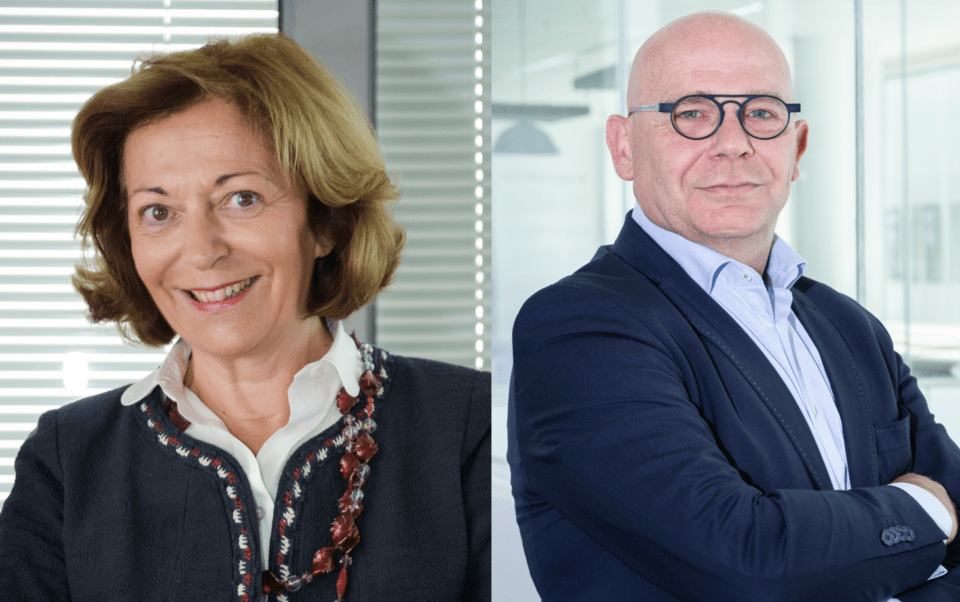Warehouse
March 22, 2021
How to optimize urban logistics and reduce its carbon footprint? Crossed interview for crossed challenges
In response to climate change, cities are working to limit the impact of urban logistics. At the same time, parcel flows are exploding and fast delivery is becoming increasingly popular, driven by the development of e-commerce. How can we reconcile these environmental and economic aspirations? Anne-Marie Idrac, President of France Logistique and former Secretary of State for Transport, and Jean-Charles Deconninck, Chairman of Generix Group, discuss this major challenge for urban logistics.
In France, logistics is still a misunderstood subject, often summed up as just delivery trucks cluttering up the streets. Does logistics suffer from an image deficiency?
Anne-Marie Idrac: “Absolutely, and this is one of the reasons why the “France Logistique” association was created in January 2020. Bringing together all the players in the French private logistics sector, the association enables us to bring the challenges facing the industry to the attention of public authorities in a cross-cutting manner and with a single voice. The health crisis has highlighted the importance of logistics, particularly in urban areas. It has shown that if we can stop the movement of people for a while, maintaining the movement of goods is essential to the economic and social life of our hospitals, stores, factories, etc. Logistics is not just a necessary problem, it is a useful sector that creates employment. It is a tool for green economic growth, provided that it can bring together a large number of players: in France, there are more road carriers than towns!”
What technologies do you consider promising to support the crossed objectives of urban logistics optimization and sustainable development?
Anne-Marie Idrac: “Electric motors will have a major role to play. And at the heart of logistics optimization, there is digital technology. Digital tools will enable us to optimize physical flows by encouraging the pooling of storage, transport and delivery needs. The predictive capabilities of AI are also very interesting: thanks to improved flows, we will be able to optimize the filling of trucks and the organization of routes.”
Jean-Charles Deconninck: “Data and communication will be the key to a new urban logistics system that will no longer be based on volume, but on frequency. The pace of flows will continue to accelerate, and transport capacities will continue to shrink. To manage these increasingly numerous and complex flows, logisticians will need to have real-time access to all the data regarding transport, particularly traffic typologies, in order to optimize the passage of their own flows. The city will therefore enter the era of open data and will have to make it available to all the players concerned: citizens, city managers, merchants, transporters, etc.”
Will the cities of tomorrow have to reinvent the way in which goods flow through them?
Jean-Charles Deconninck: “Tomorrow’s cities will necessarily be more intelligent, with the implementation of innovative flow regulation solutions that will make it possible to manage traffic information in real time, in a dynamic way, and to share it with the different delivery protagonists. There is no real choice: city centers that have become less accessible will prove to be real headaches for last-mile goods delivery, forcing the chain of urban logistics players to rethink their practices in depth.”
Anne-Marie Idrac: “Cities will have to think across the board, globally, about their city project. Am I or do I want to become a tourist city? A city of festivals? Do I want my craftsmen to be able to continue to do business in the city center? Do I prefer shopping centers on the outskirts of the city or shopping streets in the city center? If the city asks itself the right questions, logistics specialists will be able to propose solutions based on their specificities and priorities, to achieve an effective balance on the issues of air pollution, noise and congestion.”
How can we reconcile the objectives of logistics optimization and sustainable development, particularly decarbonization?
Anne-Marie Idrac: “There is no magic solution, but rather a multitude of issues that need to be addressed in a chained manner. The three essential segments on which we need to act are distance, which we want to be as intelligent and short as possible, storage, with greener warehouses that are as dense as possible, and the evolution of motorization towards electricity. The question of governance will also be very important in order to achieve a massified and sustainable urban logistics system. It will be essential to open up discussions with all the players in the logistics chain – both within the local authorities themselves and between local authorities and the various private sector players.”
Jean-Charles Deconninck: “One of the ways forward will be to optimize the use of existing infrastructures to the maximum. We can, for example, imagine the creation of ephemeral logistics sites on bus lanes between two passenger transports. Or even using the metro during its closing hours to the public by replacing users with freight in rearrangeable trains, in order to deliver to local shops in the heart of the city. What is certain is that this new urban logistics will require technological and organizational innovation, but above all, full use of all the resources already available in the cities.”





